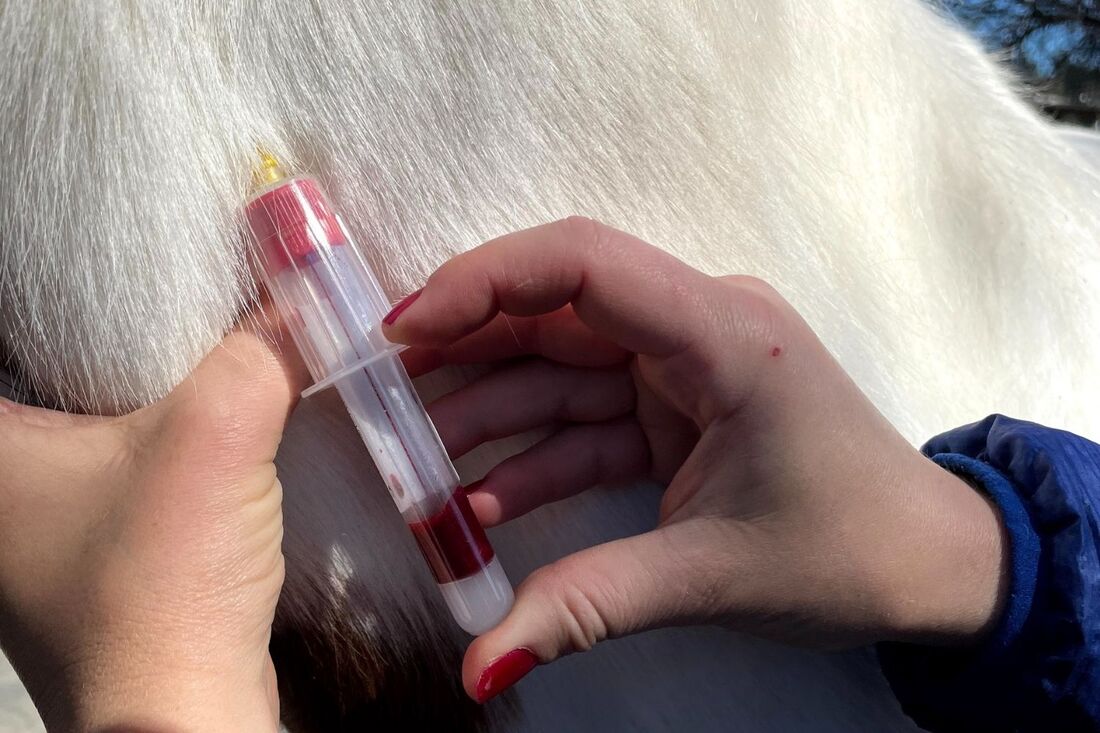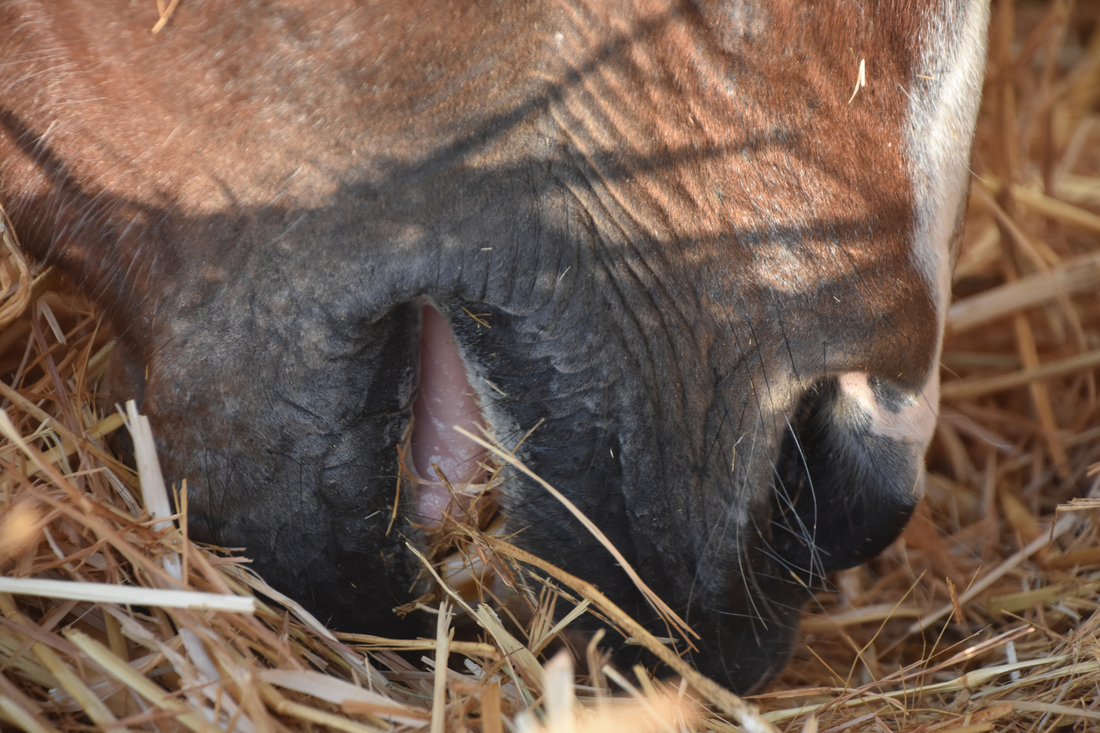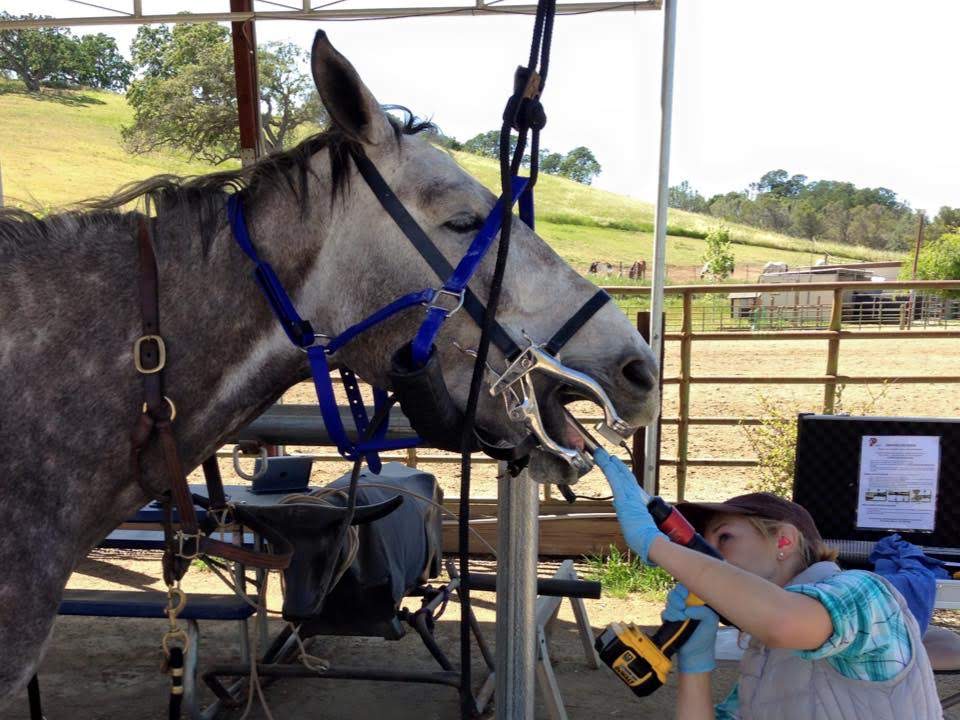|
You may have heard about Equine Cushing’s Disease (more specifically, Pituitary Pars Intermedia Dysfunction, PPID) or Equine Metabolic Syndrome (EMS), but what are they exactly, and how will they affect your horse if diagnosed? The following is an introduction to these two conditions. Equine Cushing’s DiseasePPID is the most common endocrine disorder in equines. It most often affects older horses but has been observed in some younger than ten years of age. In cases of PPID, the hypothalamus and pituitary gland fail to communicate appropriately. This failure of typical communication results in the pituitary gland becoming hyperactive, producing various hormones circulating through the body abnormally. The pituitary hormone routinely measured for diagnosis of PPID is adrenocorticotropic hormone (ACTH). Depending on the time of year, sometimes ACTH levels are measured after a small dose of thyrotropin-releasing hormone (TRH) that will stimulate the abnormal pituitary cells to secrete more ACTH. TRH Stimulation tests are useful in diagnosing the disease in the early stages. Elevated levels of various hormones in a PPID horse can cause many changes, some visible, some not, and can vary in severity in each horse. Some of these changes include: - Poor performance or lethargy - Changes in coat: long or wavy hair, failure to shed hair fully each spring - Hoof inflammation (laminitis), sometimes with associated hoof abscesses - Propensity to infections or delayed healing - Loss of muscle mass typically noticed over the back and hindquarters, as well as a “pot-bellied” appearance - Excess or inappropriate sweating - Increased water intake and urination - Infertility or abnormal heat cycles in mares While PPID is not curable, both medical and daily management changes can reduce the condition’s signs and symptoms. The most appropriate medication is pergolide, a dopamine receptor agonist. It helps decrease some of the hormone production by the pituitary gland. Other essential components of PPID management are the maintenance of excellent husbandry and general health care. Close attention to nutrition, vaccination, deworming, medical treatment, and horses’ hoof care is recommended. Equine Metabolic Syndrome (EMS)EMS is characterized by insulin dysregulation and resistance. Causes of EMS onset include genetics, diet, environment, and, sometimes, coexisting PPID. Breed predispositions to EMS include many pony and mini breeds, Saddlebreds, Morgans, and Paso finos. Horses may be an “easy keeper,” not seemingly requiring as much feed as their friends. Diet can also play a role, including a high-sugar-content diet or suddenly increased access to lush, fresh grass. Clinically, these horses may appear overweight and most commonly show “regional adiposity,” Fat deposition occurs at the neck, shoulder, and above the tail head. Because of the increased circulating insulin levels, EMS horses are also at increased risk for foot soreness and laminitis, which can be extremely painful and devastating to the horse if not addressed. Testing involves a thorough physical exam and blood tests to ascertain insulin levels and glucose, leptin, and thyroid levels. Starwood submits its bloodwork for PPID and EMS to Cornell, leading researchers in the field who have developed a comprehensive panel to diagnose both conditions. The mainstay of treatment for EMS is nutritional management and weight loss. If diagnosed, your veterinarian may recommend transitioning hay and grain sources to brands with lower starch content. Sometimes, your veterinarian may also recommend medications to accelerate weight loss and sensitize the body to insulin again. Exercise is also essential to promote weight loss as long as the horse remains comfortable on its feet. If your horse is also diagnosed with PPID, treatment with pergolide may improve the signs of EMS. Early recognition of these conditions and regular veterinary care is critical for a good quality of life. If you wish for further information about either of these conditions or are interested in getting your horse tested, please contact Starwood Equine.
2 Comments
Your beloved hooved family member doesn’t move as quickly as they once did, nor do they clean up their dinner as ravenously as their younger colleagues down the barn aisle still do. Observing their nightly meal, you may notice that they struggle to keep their grain in their mouth and instead offer to share some of their semi-chewed foodstuffs with you. Is this a veterinary concern, you ask? Though it might not be considered an urgent emergency, it certainly is a worthwhile topic to address with your veterinarian. When older horses can no longer chew as they once did, they begin to exhibit signs indicating to us that something may not be quite right with them orally. They may attempt to chew feed but end up dropping partially chewed foodstuff; an action called quidding. You may find that they are progressively more reluctant to clean up their breakfast or slowly becoming disinterested in food altogether. Difficulty consuming all of their calories and nutrients results in older horses having a significantly greater risk of malnourishment, weight loss, and oral infection. They may also experience an overall suppressed immune system. Horses’ teeth continuously erupt throughout their lives. Their teeth begin to expire as they age. Progressive loss of occlusive surface makes them prone to more oral problems, including:
With digestion and the ability to absorb nutrients continually diminishing with age, owners can support their aging athletes with minimal intervention at home. Transitioning your horse’s diet to more easily digestible foods, such as pellets, may be warranted if they experience difficulty chewing hay. Soaked hay cubes are another alternative source of fiber available, providing proper roughage in an easily consumable way. If chewing capabilities continue to decline, offering highly palatable and nutritionally balanced pelleted feeds with higher caloric value may allow older horses to meet adequate nutrition and satiety needs while consuming smaller volumes of food altogether. By having an annual oral examination performed on your senior horse, your veterinarian can assess your horse’s oral health and offer suggestions for better supportive measures. Using an oral speculum paired with light sedation, we can visualize the whole mouth to find abnormalities. Your veterinarian will then determine whether floating or further diagnostics and treatments are warranted.
Older horses, just like older humans, are prone to a myriad of dental woes. With diligent monitoring by the attentive owner and annual care provided by your veterinarian, many primary and painful issues can be successfully managed or altogether avoided so that your horse may live out his or her golden years pain-free. |
Topics
All
Archives
May 2021
|
Privacy Policy | Copyright © 2019 Starwood Equine Veterinary Services, Inc. All rights reserved.




 RSS Feed
RSS Feed